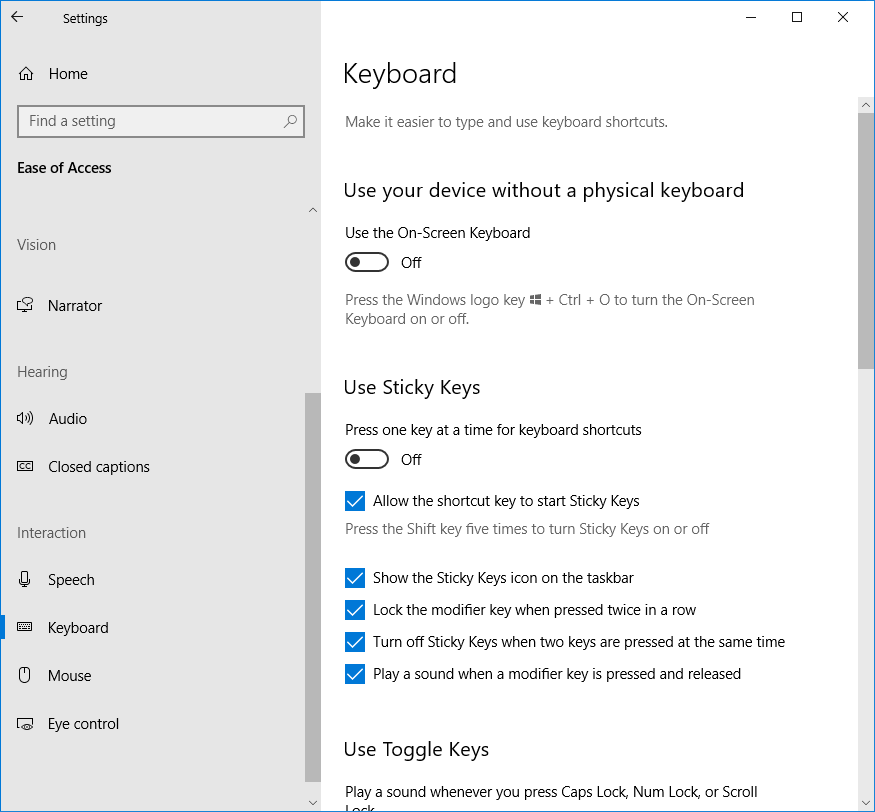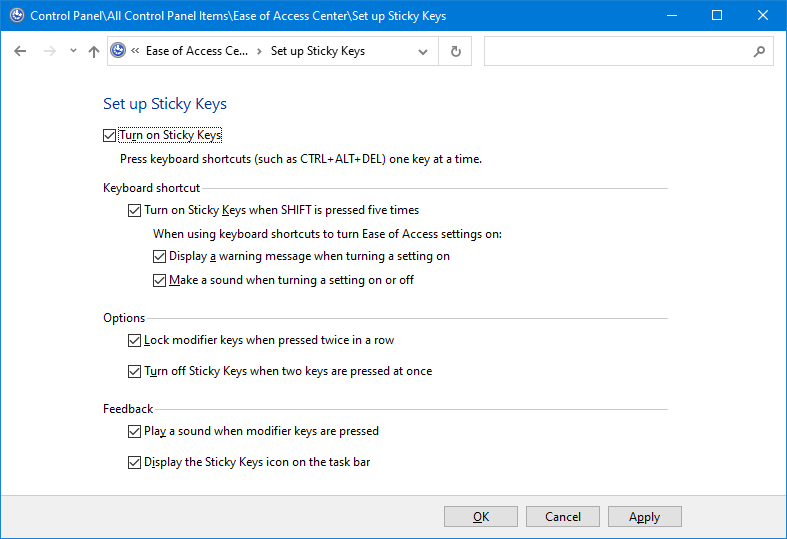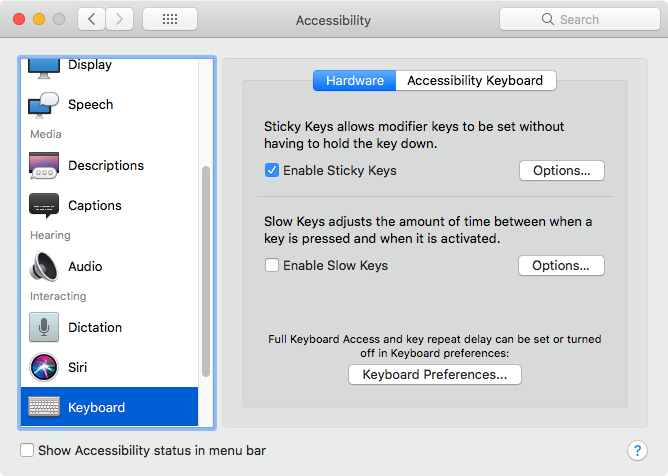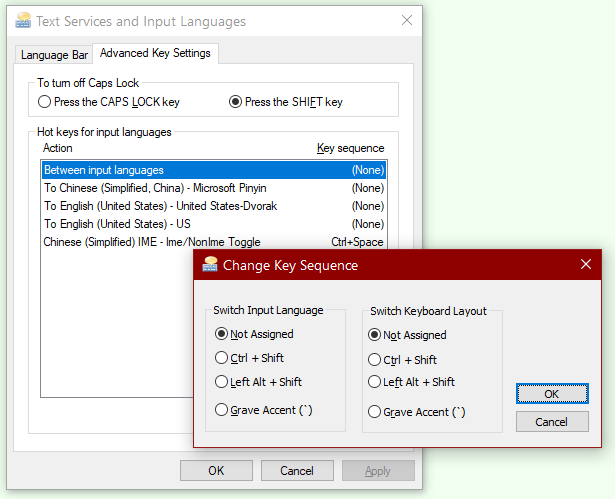Sticky Keys
What is Sticky Keys
Sticky Key is a keyboard feature in {Windows, Mac, Linux}.
It lets you press key combination by pressing each key in sequence. For example, to press Ctrl+c, you press Ctrl, release it, then press c.
This works for any of Shift Ctrl Alt ⌥ option ⌘ command
Sticky Key is an excellent feature if you have hand pain from Repetitive Strain Injury of typing key combo too much.
How to Turn on Sticky Keys in Microsoft Windows
On Windows 10, press ❖ Window, then type “stickykey” to launch the settings.


Sticky Keys Indicator on Microsoft Windows
Once its on, you have this key indicator in the taskbar. It shows which modifier keys are currently “stuck”.

How to Turn on Sticky Keys in MacOS
On Mac, go to menu [System Preferences ▸ Universal Access ▸ Keyboard tab].

How to Turn on Sticky Key in Linux
For Linux, it's usually under the system preference settings, Accessibility section or Keyboard section.

quirks with Sticky Keys
Sticky key takes some getting used to. I tried sticky keys since about 2010. On Microsoft Windows, Mac, Linux. But often ends up turning them off, after about a month. But then, kept going back to turn them on.
Here's some quirks. You should get used to them. It's worth it.
If you have sticky keys on, you have to press ❖ Windows key 4 times to start and exit it.
Also, normally, Esc cancels sticky, but if you have Ctrl on, and press Esc, which becomes Ctrl+Esc, which invokes the Windows start menu like what the ❖ Windows key does. Similarly, Alt+Esc switches window.
Another example, look at the following shortcuts.

you have shortcuts like shift by itself, or Ctrl+Shift, or LeftAlt+Shift, then with sticky keys on they become very confusing.
used in Chinese Input Methods
solution is to turn off any shortcuts that involves only the modifiers.